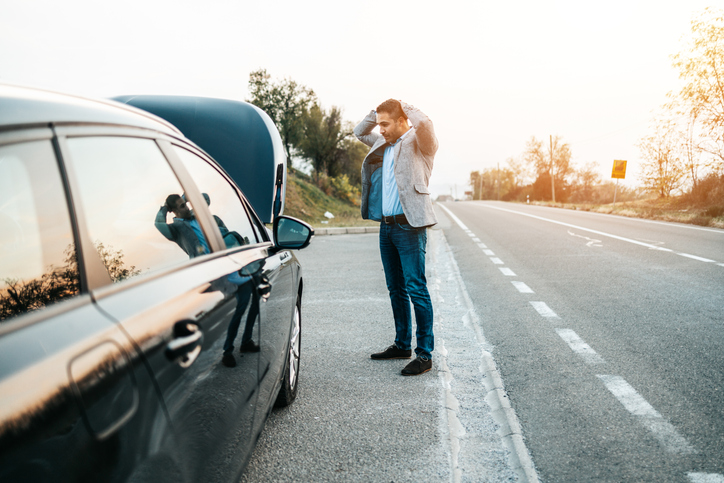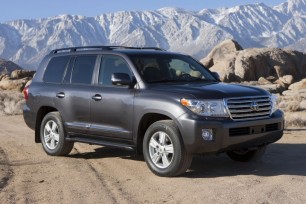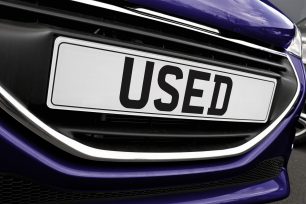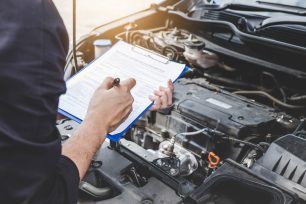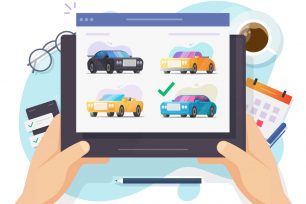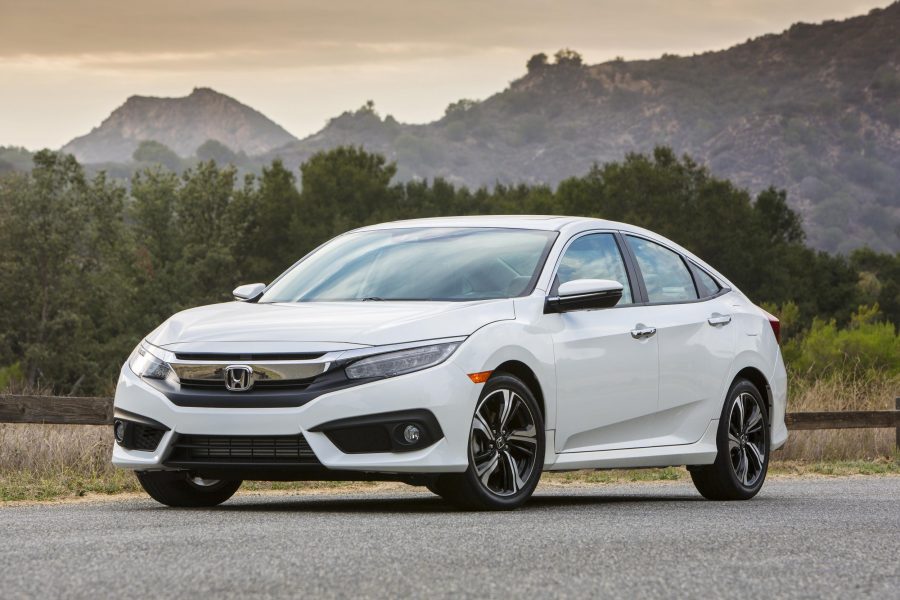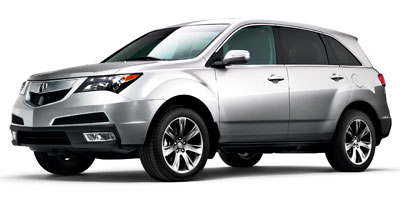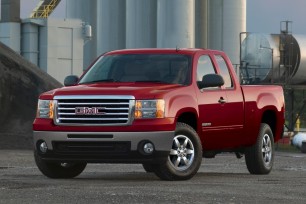Be prepared. There’s a reason why the Boy Scouts adopted this simple motto, which can apply to all areas of life. And one area where it’s crucial to be prepared is in your car, because regardless of how reliable your vehicle is, it will inevitably break down and you’ll likely be far from the comforts of home when it does. To help drivers prepare for all unexpected scenarios, we’ve developed a helpful guide of things to keep in your car. These essential items could make all the difference when ensuring your breakdown is benign versus catastrophic. Some of these items will help you travel more comfortably during your day-to-day driving as well.
We hope your vehicle doesn’t leave you stranded on the side of the road, but we recommend these 25 things to keep in your car just in case.
1. Up-to-Date Registration
We’ll start with the obvious one here. You’ll need your car registration if your vehicle doesn’t break down. There’s always the chance that you’ll be going a tad over the speed limit or unknowingly take a turn at a red light when you weren’t supposed to, and a police officer will happen to be watching. More importantly, however, is the off-chance that you’re in an accident. Your registration will be a necessity in this instance as well. In either instance, you will need proof of your registration. If you don’t have that proof, you can receive a citation or a fine. If your registration isn’t current, you can be pulled over for having an expired registration. This will result in a harsher penalty than simply not having proof of a current registration, and your penalty will depend on how long your registration has been expired. In the most extreme case, your vehicle could be impounded. Always be aware of when your registration is set to expire, and make sure you renew it before that happens.2. Insurance Card
Car insurance is mandatory in 49 of 50 states. The exception is New Hampshire, where it is not required as long as you can show financial responsibility. To show that you are compliant with your state’s law you should always have your proof of insurance with you. Not only is it the law, it is also a necessity should you ever get in an accident. Proof of insurance varies with your insurance company and can be in the form of an ID card or in a document. It must contain your policy number, effective dates, your vehicle description and VIN, and name of the policyholder. Online versions of these documents are also available, so you can save them on your phone for easy retrieval instead of keeping the physical version in your glove compartment . However, we recommend having a physical version handy along with the electronic version.3. Owner’s Manual
Another item that should be a mainstay in your glove box is your car’s owner’s manual . This will include helpful information like what your tire pressure should be and what certain warning lights mean. You never know when you’ll need it, so you should always have it accessible. Modern cars often include a digital version of the owner's manual, but just like registration, we recommend a paper copy as backup, and you can often request these from the manufacturer or a site like Helminc.com.4. Spare Tire/Tire Jack
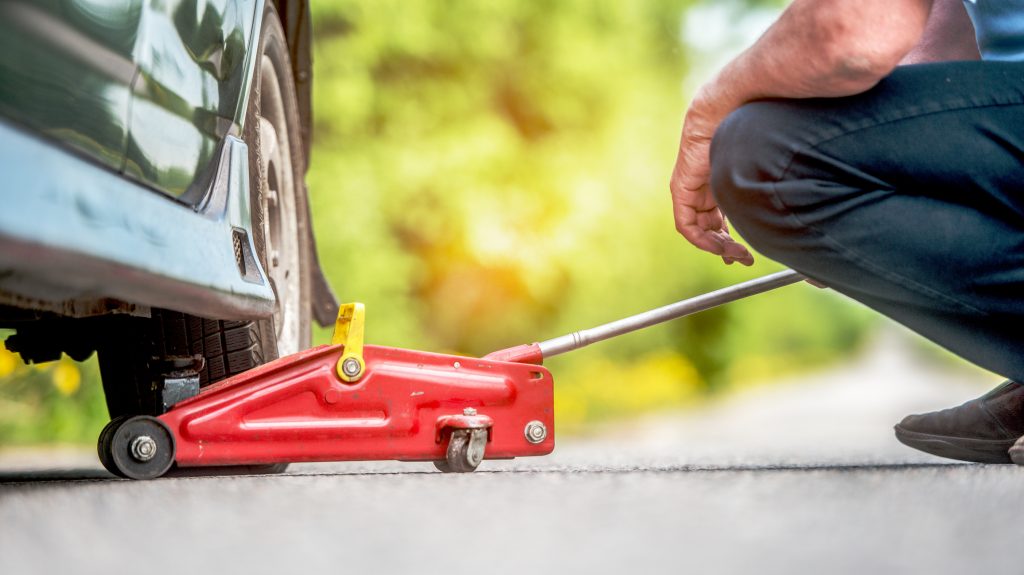
Who knows what evil lurks in the hearts of the roads, waiting to take a nice big chunk out of one of your tires, or poke something really sharp into one. Unless your vehicle is equipped with run-flat tires, these occurrences can quickly put an end to your travel plans. So, unless you want to pay a tow truck to come and haul your vehicle to the nearest service station, you’ll want to make sure your spare tire is always properly inflated (something you can ask any shop to do whenever your vehicle is in for service), and your tire jack is in proper working order. You should also have the correct tools to change a tire, including a lug wrench. AAA members can call to have their tire replaced with their spare, though you will likely have to wait a long time.
5. Tire Pressure Gauge
Keeping with the tire theme is a tire safety gauge. While modern vehicles have warning indicators to let you know if your pressure is low, it’s important to have a tire pressure gauge to ensure you fill your tire up to the correct PSI. You can also go a step further and have a portable tire inflator so you never have to rely on air from a gas station .6. Tire Pump and Sealant
Keeping wth the tire theme, you can also go a step further and have a portable tire inflator so you never have to rely on air from a gas station . If you have a minor puncture, filling the tire with air and sealing it will allow you to safety drive to your destination.7. Jumper Cables/Emergency Road Kit
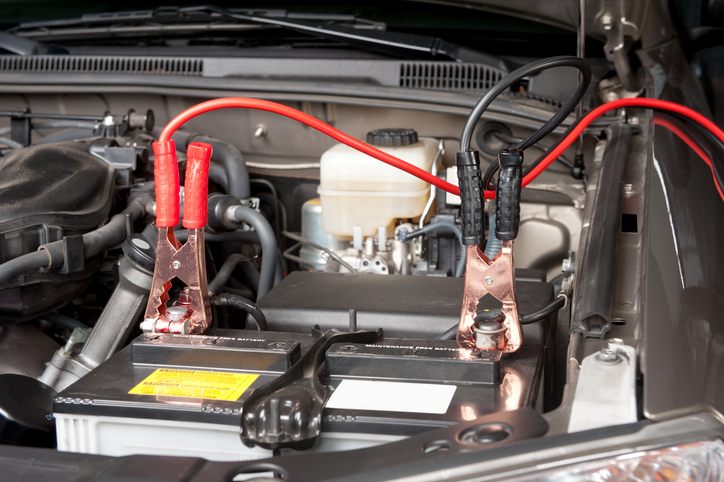
Did you know some car batteries only last for two years? While three to four years is the norm for battery life, a dead battery can come without warning, especially during the winter months. While jumper cables are a necessity, the full emergency road kit is a strong recommendation. Most emergency kits, which can be purchased on Amazon or at any big-box retail store, will come with a small array of tools, such as wrenches, screwdrivers, and pliers, as well as road flares, fluorescent reflective triangles, hose tape, and those jumper cables. The jumper cables will come in extremely handy if you have a habit of leaving your headlights or dome lights on. Either thing can drain the life from your battery in as little as a few hours depending on the age and strength of your vehicle’s battery. You can even purchase a portable car jump starter that allow you to recharge your battery without another vehicle.
8. Blankets
This may seem like a silly thing to have in your car if you live in a warm place like Florida, Texas, or Southern California; but blankets come in handy for more than just keeping you warm. Say you break down on a road that’s covered in dirt, gravel, mud, grime, or some sticky substance you dare not guess about. Laying a blanket down to get on the ground and see what’s wrong, or simply to change a tire, can save your clothes, knees, and back a whole lot of trouble. Of course, there’s always the keeping warm thing, too, if you live in an area where it gets cold.9. Washer Fluid
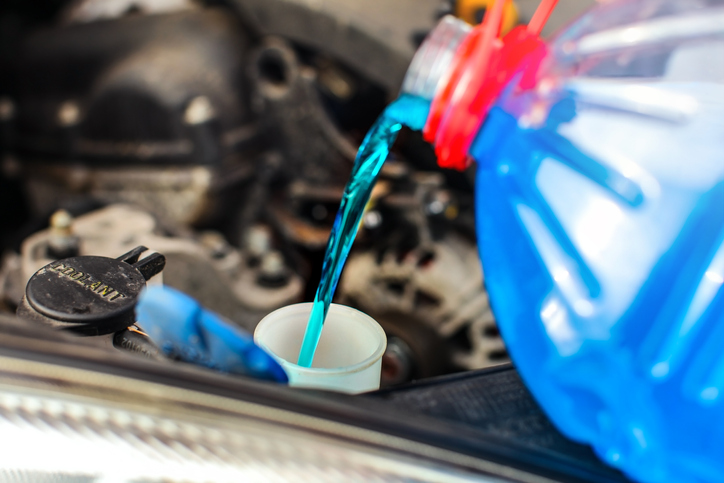
We suggest always keeping a gallon of washer fluid in the trunk. Chances are you’ll never need it, until that one time when a semi throws three inches of mud and muck on your windshield and you hit the windshield wiper button only to hear that familiar buzz…and get nothing. Pulling over and grabbing the washer fluid from the trunk is much easier than dumping whatever drink you have in the cup holder on your windshield and trying to scrub it clean with your shirt.
10. Flashlight
Some of those emergency road kits we talked about earlier do come with a flashlight; however, most don’t. A flashlight will not only come in handy if you happen to break down at night and need to see under your hood or around your car, but it’s also very handy for keeping oncoming traffic away from your vehicle if you don’t happen to have road flares or markers. A flashlight can also come in extremely handy if a passenger needs to find something in the vehicle at night while you’re driving. Driving with the dome light on is still illegal in most states. Just make sure you check the batteries in it often.11. First Aid Kit
In times of crisis, a first aid kit can literally be a lifesaver. This one should need no explanation whatsoever. If you’re bleeding, a spare tire isn’t going to do much for you, but band-aids will.12. Cell Phone Charger
Having a dedicated phone charger that remains in your car is a lot more convenient than bringing one with you on long road trips or when you think you’ll be out of the house for a while. Sometimes we neglect to charge our phone the night before or accidentally run an app in the background that drains your battery. Regardless of the circumstance, you don’t want to be without your only lifeline should you break down and need to call for help. You may also rely on your phone as a GPS system, and you don’t want to be at the mercy of your phone battery to get you safely to your destination.13. Duct Tape
Duct tape is one of the most versatile items out there. Just like it can come in handy for temporary (or even permanent) household repairs, it can be very helpful should something break on your vehicle. Say you sideswipe a pole, or if you were the victim of a hit-and-run and your mirror comes loose. Duct tape can keep it in place until it can properly be repaired. You can also use it to temporarily halt leaks in your roof or sunroof to mitigate or prevent costly water damage.14. Ice Scraper
If you live somewhere with inclement winter weather or even somewhere where it snows infrequently, you should always have an ice scraper in your car. You can get one that is attached to a snow brush so you have everything you need to remove snow and scrape ice off your vehicle. Driving with compromised sight lines can present a hazard to you and other drivers on the road. And in areas with extreme snowfall, keeping a shovel in your trunk to remove snow around your vehicle can also be helpful.15. Paper Towels and Tissues
Paper products may not save you from danger, but they can certainly make any ride more comfortable in the event of a spill, an unexpected runny nose, or an extra messy drive-through order. If you travel with children, these are even more essential. Baby wipes, even if you don’t have a baby, also prove effective to help clean up spills and messes.16. Spare Change
You should keep spare change or an emergency stash of cash somewhere in your car. While most parking meters now allow you to pay with a credit card, there are still some holdouts that require change. You may also come across an unexpected toll.17. Fire Extinguisher
This item is one that you will hopefully never have to use, but it’s important nonetheless. Because vehicles can catch fire during an accident, a fire extinguisher can help put the fire out before help arrives. Modern fire extinguishers are available in extremely small sizes without sacrificing effectiveness, so there’s no excuse to forego this item, even in smaller vehicles or sports cars.18. Multi-tool
A multi-tool, such as a Leatherman,l is a small toolkit that includes common tools in a compact package that can fit right in your glove box. It includes scissors, a screwdriver, wrench, knife, and can/bottle opener to cover your bases should you need a tool.19. Water Bottles
Water bottles can save your life if you are stranded and in need of hydration. In less extreme circumstances, like unforseen traffic, having water handy can make the ride more comfortable. Just make sure your water bottle can withstand extreme temperatures.20. Non-Perishable Snacks
It’s a good idea to have an easy-to-eat snack handy in the event that hunger strikes. Suggestions include energy bars , nuts, or crackers.21. Escape Tool
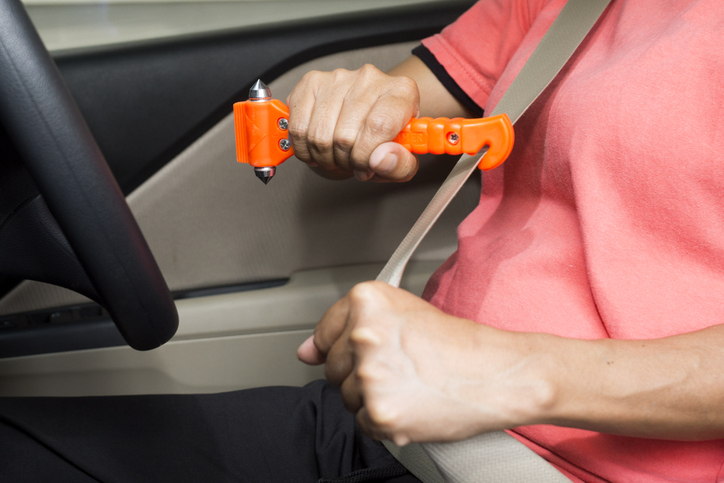 Women use Safety Hammer and Seatbelt Cutter in Cars,Cut belt When emergency.
Women use Safety Hammer and Seatbelt Cutter in Cars,Cut belt When emergency.
An escape tool is another item you will hopefully never need, but it can provide peace of mind knowing it’s there. An escape tool can cut through a seatbelt and can break window glass from the inside. These can also be lifesavers if you encounter a car accident with someone trapped in their vehicle.
22. Umbrella
Even if there is no rain in the forecast, you never know when you’re going to be caught in an unexpected shower.23. Hand Sanitizer
Hand sanitizer is top-of-mind during the global pandemic, and it should remain a mainstay in your vehicle even after the pandemic ends to help prevent the spread of infectious germs.
24. Kitty litter
If you live in an area where icy conditions occur, having kitty litter in your trunk during the winter can be very helpful. It can provide the necessary traction to get out of an icy parking spot or driveway. You don’t need a whole bag though, as it can weigh down your vehicle. A smaller container filled with kitty litter should be sufficient in most cases.25. Reusable Grocery Bags
Not only are plastic grocery bags banned in some states, but they are also bad for the environment. Having a stash of reusable grocery bags in your car trunk will come in handy for trips to the store and can also hold more items than the typical single-use grocery bag .While there’s something satisfying about an empty trunk and a minimally-filled glove compartment, these empty spaces will leave you unprepared during an emergency or inevitable on-the-road inconvenience. Hopefully you will never need to use these emergency items, but you can rest assured knowing that you have them accessible.
More from iSeeCars:
If you’re in the market for a car, you can search over 4 million new and used cars with iSeeCars’ award-winning car search engine that helps shoppers find the best car deals by providing key insights and valuable resources, like the iSeeCars VIN check report.

